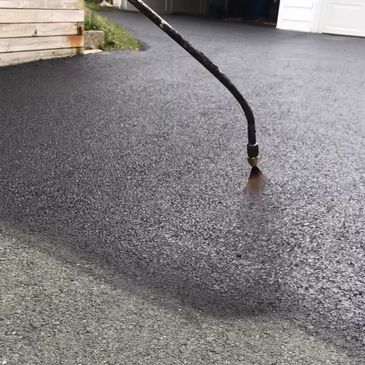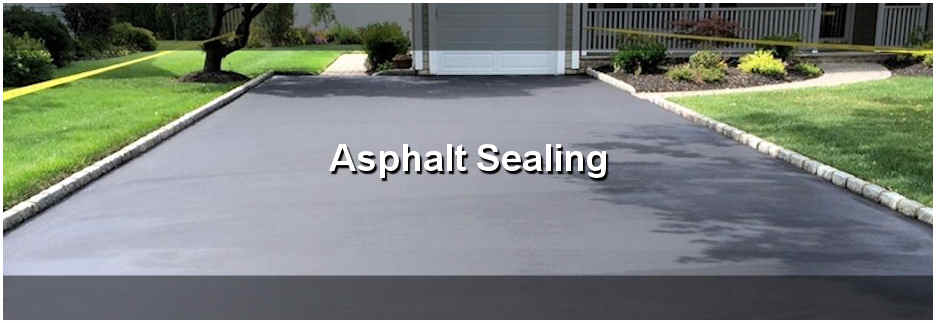Improve Durability with Cold Mix Asphalt: Expert Sealing Solutions
Improve Durability with Cold Mix Asphalt: Expert Sealing Solutions
Blog Article
Cold Mix Asphalt Vs. Hot Mix Asphalt: Which Is Right for You?

Make-up Differences
Cold mix and hot mix asphalts differ dramatically in their make-up, with distinct qualities that impact their efficiency and applications. Cold mix asphalt is generated by emulsifying the asphalt binder with water and an emulsifying representative before mixing it with aggregate. This technique enables the asphalt to be workable at lower temperature levels, making it optimal for momentary fixings and for use in colder weather condition conditions. Hot mix asphalt, on the various other hand, is made at high temperature levels, commonly in between 300-350 ° F, which helps to attain better compaction and a much more sturdy end product. The warm mix asphalt production process includes heating the aggregate and asphalt binder individually prior to integrating them at the asphalt plant.
In addition, cool mix asphalt has a tendency to be less dense and a lot more versatile than warm mix asphalt. This adaptability makes it better suited for areas with higher degrees of activity, such as driveways or roadways with hefty traffic. In contrast, hot mix asphalt is recognized for its high durability and resistance to rutting and splitting, making it a preferred option for highways and high-traffic roads where long life is important.
Installment Process Variances
The process of installing cold mix and hot mix asphalt exhibits notable differences in their procedures and needs. Cold mix asphalt, being an extra flexible material, can be applied straight from the bag or container onto the crater or damaged area. It needs marginal preparation job, such as cleansing the location and condensing the cool blend with hand tools. This makes it a hassle-free option for quick and short-term solutions. In comparison, warm mix asphalt demands a much more intricate installation process. It includes heating up the mixture to heats prior to laying it down on an appropriately ready base. The prep work includes condensing the base, applying a tack layer, and using heavy equipment like pavers and compactors for a resilient and smooth surface. Because of the heating demands, hot mix asphalt installments are usually lugged out by specialists with specific equipment, making certain an extra structurally audio and irreversible outcome.
Longevity and Long Life Variables
When considering asphalt alternatives, resilience and long life are vital aspects to assess for long lasting pavement performance. Hot mix asphalt (HMA) is known for its outstanding longevity and durability.
In regards to long life, HMA generally outmatches CMA because of its remarkable stamina and resistance residential properties. HMA sidewalks have a longer life span, calling for much less frequent repairs and maintenance, which can translate to set you back financial savings in the our website long run. In addition, HMA pavements are more easily adjustable to meet specific project demands, even more boosting their durability.
Cost Factors To Consider
Considering the economic ramifications is an important element when examining the choice between hot mix asphalt (HMA) and cold mix asphalt (CMA) for pavement jobs. While the preliminary cost of warm mix asphalt is generally more than that of cold mix asphalt, HMA commonly offers a much more economical service over time due to its exceptional toughness and long life. HMA is understood for its capacity to endure rush hour lots and severe climate condition, reducing the need for constant repair services and maintenance. On the various other hand, cold mix asphalt is more budget friendly in advance however might need more constant patching and resurfacing, causing greater maintenance expenses in time.
In addition to product prices, it's necessary to think about the expenditures associated with installment and maintenance when comparing HMA and CMA. Eventually, the choice between HMA and CMA must take into account not simply the initial expense yet also the long-lasting financial ramifications to identify the most cost-efficient option for the details pavement project.
Environmental Effect Contrast
Contrast of the ecological influences in between hot mix asphalt (HMA) and cool mix asphalt (CMA) discloses unique differences he said in sustainability practices. HMA manufacturing calls for high temperatures, leading to raised energy usage and greenhouse gas emissions.
Furthermore, making use of CMA often includes recycling existing asphalt pavement, advertising source conservation and minimizing the quantity of waste sent to garbage dumps. This recycling facet additionally enhances the sustainability of CMA compared to HMA. Generally, when thinking about the ecological influence, CMA becomes a more eco lasting choice due to its lower power demands, lowered exhausts, and the capacity for reusing existing products. By deciding for CMA over HMA, roadway building and construction tasks can contribute positively to environmental preservation initiatives.
Final Thought
Finally, the choice between cool mix asphalt (CMA) and hot mix asphalt (HMA) depends on numerous aspects such as structure, installation process, durability, long life, expense, and environmental influence. asphalt repair. While CMA supplies a affordable and quick solution for minor repair work, HMA guarantees remarkable durability and durability for hefty web traffic locations. Think about these variables meticulously to identify which kind of asphalt is the best choice for your paving requires

Thinking about the financial ramifications is an essential facet when evaluating the option between warm mix asphalt (HMA) and cool mix asphalt (CMA) for pavement jobs. While the first cost of warm mix asphalt is typically higher than that of chilly mix my sources asphalt, HMA often offers a more cost-effective service in the long run due to its premium resilience and durability. asphalt patch repair.Contrast of the ecological impacts between hot mix asphalt (HMA) and cool mix asphalt (CMA) discloses unique distinctions in sustainability techniques.In conclusion, the selection between cold mix asphalt (CMA) and hot mix asphalt (HMA) depends on different aspects such as structure, setup procedure, durability, longevity, cost, and environmental influence
Report this page